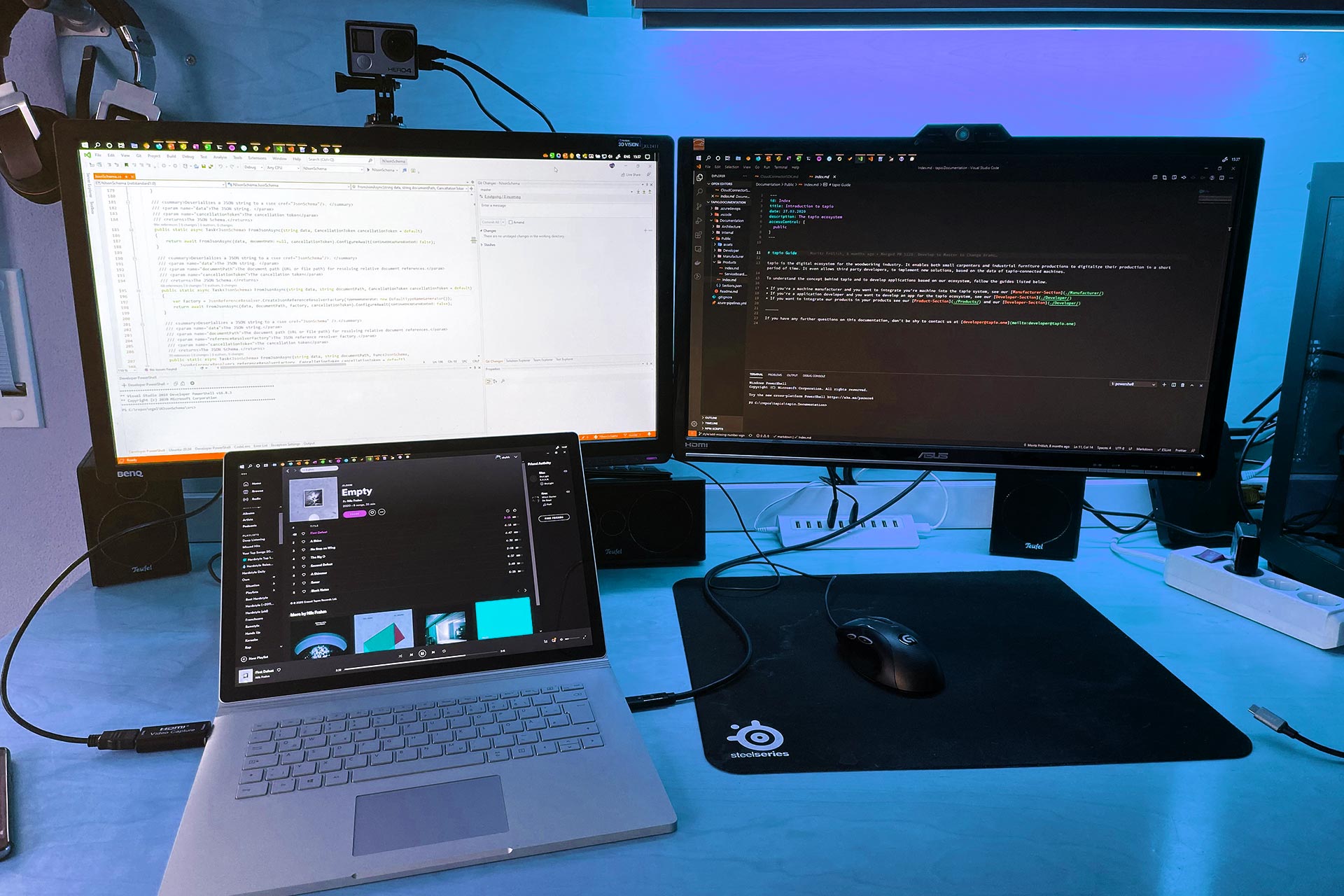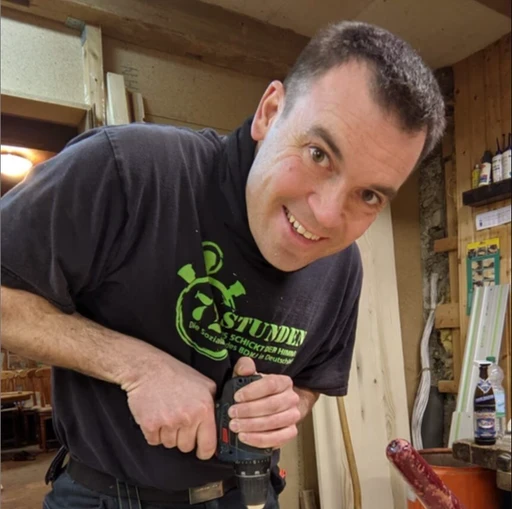Blog
Software Development at tapio: Taking Off During the Pandemic
Monday, January 11, 2021

Simon Eßlinger
When I applied for a job as a software developer at tapio in January 2020, I assumed I would be able to start my career as a software developer in tapio's office in Nagold.
However, due to the global Covid 19 pandemic, the way many companies work has changed.
tapio also decided to work 100% distributed in order to counteract the spread of the virus. Fortunately, tapio's structure allowed remote work, even though there were certainly hurdles at the beginning in changing the way of working. Since my first day of work in October 2020, I have only been in the office to pick up my laptop and since then I have been working from home, just like my colleagues.

A remote career start brings some challenges with it. As a new team member, there are basic things to understand first:
How do our products solve our customers' problems?
Who are our clients?
Who are my colleagues and how do I become part of the team?
On top of that, there are technical specifics of my role as a developer at tapio:
How are our products implemented?
Which tools, frameworks, design patterns, etc. are used?
How does our development process work?
When you start something new, you generally have to familiarise yourself with a few things.
You could learn a lot of this on the spot in the office by "looking over the shoulder" of others, having coffee or lunch break conversations and having the privilege of only ever having to turn around once to ask someone a question.
But how does this work remotely during a global pandemic?
Onboarding
Onboarding takes time. In the first weeks of my onboarding, we explicitly took this time into account when planning the upcoming tasks. For example in the form of pair programming tasks or exclusively reserved time for exploring our codebase. In addition, we have also made sure that I work on tasks that help me get an overview of our ecosystem, such as dealing with 3rd-level support requests.
In order to get to know my team better, apart from virtual team events (such as a round of Skribbl.io), the practice of starting some meetings 5 minutes earlier and then using these 5 minutes for "coffee chats" has helped me a lot.
But the most important thing was not to let the physical distance of my team members stop me from asking questions via chat or call and to be patient. One simply does not learn everything in one day.
Working from home
The freedoms of working from home also comes with responsibilities for one's own workplace.
When I set up my home office, I made sure that my workplace was ergonomic, economical and optimised for my colleagues. By this I mean, for example, the purchase of an office chair, the use of several screens and a good webcam for calls with my colleagues. One can also get creative in the process: Since webcams are hard to come by in 2020, I converted an old GoPro with a capture card into a webcam.
Optimism
The fact that 2020 was not the optimal year to start a career as a developer is no reason to be pessimistic.
Apart from the pandemic-related restrictions, distributed working also saves time and money for commuting to the office and makes it possible to plan one's daily routine more flexible or even to work from other locations. I was also able to help brighten up our digital team events, such as the Christmas party, with one or the other game - and we also managed and enjoyed that together remotely and digitally.
Learning from the best
While distributed working is a new challenge for many companies, there are companies that have always worked without offices, such as GitLab. They publicly document their way of working in the form of a manual, which also includes a guide to distributed working. The manual answered many of my questions about distributed working as an upcoming software developer - perhaps a reading tip for you.
Although I can easily come to terms with the current situation as a so called digital native, I still hope to be able to meet my colleagues in person in the office again soon.
If you enjoy free and independent work with challenging tasks as much as we do, we are a team!


















